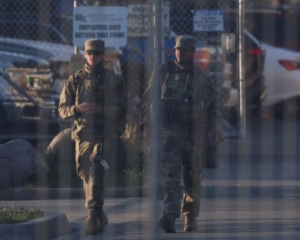The ICE detainee locator is a vital online tool provided by U.S. Immigration and Customs Enforcement. Officially known as the Online Detainee Locator System (ODLS), it is designed to help families, attorneys, and advocates find individuals currently in immigration detention. As concerns grow across the country about detentions without due process, understanding how this system functions has become more important than ever.
The ICE detainee locator allows users to search for individuals using two methods. The first is by using the Alien Registration Number, also known as the A-Number. This nine-digit number is assigned to noncitizens by U.S. immigration authorities. In order to search by A-Number, the person conducting the search must also provide the detainee’s country of birth. This method is often the most accurate when the correct number is known.
The second way to search is by using biographical information. This requires the individual’s full first and last name, date of birth, and country of birth. However, the system is strict about name spelling and format. It will not produce results if the spelling is incorrect or if only a nickname is used. Because of this, individuals trying to locate someone must be as precise as possible.
The ICE detainee locator is publicly available and can be accessed online through the official ICE website at locator.ice.gov. The interface is available in both English and Spanish, making it accessible to a broader range of users. It serves as one of the few official ways the public can track the whereabouts of detainees in ICE custody.
However, there are important limitations to the ICE detainee locator. One of the most notable is that it only includes individuals who are 18 years or older. Minors in custody will not appear in search results. Additionally, people held in other types of custody—such as by Customs and Border Protection (CBP) or in local jails under different jurisdictions—are not listed in this database. This limitation can create confusion and concern among families trying to locate a missing loved one.
Another issue with the system is that detainees who have only recently been taken into custody may not appear in search results for several hours or even days. ICE updates the system regularly, but there is no guarantee of real-time accuracy. People who are transferred between facilities or who have been released, deported, or removed from ICE jurisdiction may also disappear from the system altogether.
In some cases, a person may not show up because they were booked under an alias or alternate spelling of their name. This poses a major barrier for families who do not have official documentation or who are unsure of the exact details entered by ICE officials. Advocates warn that overreliance on the ICE detainee locator can delay urgent efforts to find and support a detainee, especially if they are being held in non-traditional or unofficial facilities.
For those who cannot find a person through the locator, ICE advises contacting the local ICE Field Office directly. This can often yield more current or detailed information, particularly if the detainee is being held at a contracted or lesser-known facility. Immigration attorneys and advocacy groups also provide support in tracking down detained individuals when official systems fall short.
Privacy is another factor families must consider when using the ICE detainee locator. Since the system requires specific personal data to perform a search, some may hesitate to use it, fearing it could trigger further scrutiny or legal complications. Still, for many families, it remains the only available tool to get information about their loved ones.
As the use of private detention centers and third-party contractors increases, there are growing concerns about transparency in the immigration detention system. The ICE detainee locator, while helpful in many cases, does not reflect the full scope of where and how individuals are held. For families navigating the uncertainty of a loved one’s detention, it offers some answers—but not always the complete picture.







